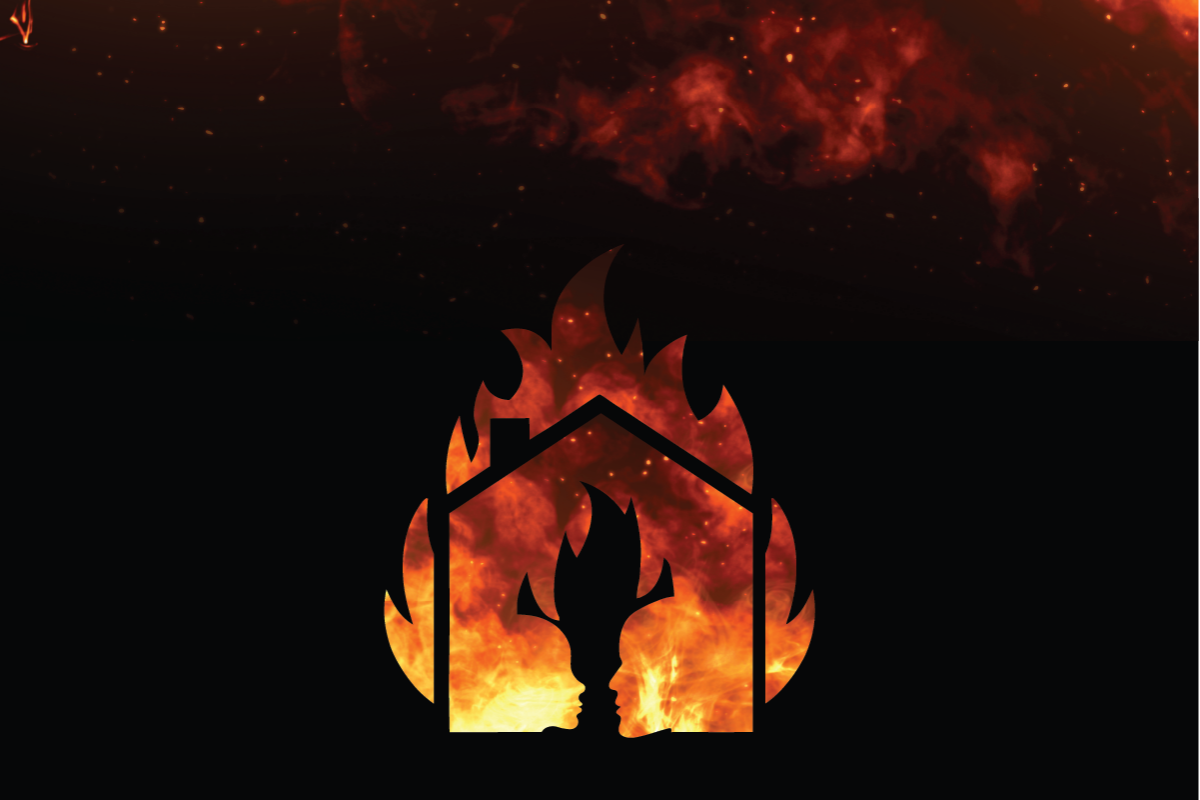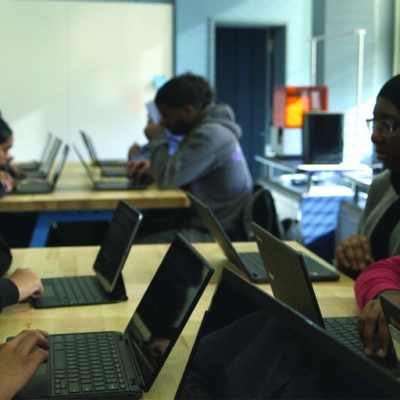
New Narrative Game Raises Awareness of ACEs & Their Impact on Youth Mental Health
Children of the Flame is a narrative game created by youth designers at the SEED Institute. Here’s how they plan on using it to build awareness of adolescent childhood experiences (ACEs) and push for trauma-informed practices to reduce the harm.
"Afraid."
"Disturbed."
"Sad."
"Aware."
These are some of the emotions that Malik, Dana, and Luisa—three of the SEED Designers behind Children of the Flame—want people to feel while playing it. Expanding the SEED Institute's library of games that gives voice to their lived experiences as young people, Children of the Flame is a trauma-informed, single-player narrative game that invites players to engage with a set of characters in a meaningful and awareness-building way. All characters are young people of color who attend the same predominantly white high school and are enrolled in a METCO program there. One afternoon, all characters end up in the same detention room. The player behind the headset must figure out what led the characters to be in trouble. Clicking on each character enables the player to be transported to that character's home, where they can explore their room and neighborhood to learn more about their life, family, and community.

A look at this first vertical slice of the single-player virtual reality (VR) game, Children of the Flame.
Children of the Flame's immersive story structure weaves in generational trauma and adverse childhood experiences (ACEs). The Centers for Disease Control and Prevention (CDC) defines ACEs as potentially traumatic events that happen in childhood (0-17 years). "Everyone experiences ACEs differently and not all young people who experience them will be impacted negatively. Of course, the more ACEs that one experiences, the more likely there is to be a negative impact," says Dr. Lora Henderson, an assistant professor and licensed clinical psychologist who collaborated with SEED Designers on a workbook that'll accompany the game and deepen understanding of the impact of ACEs and trauma. "ACEs and the subsequent trauma they can cause often result in physiological and psychological responses that get in the way of typical adolescent development."
Understanding the need to protect young people's physical and psychological development, the young architects behind Children of the Flame intend for it to be educational and preventative for teenagers in middle and high school. In each character's room—built with game development partners at FableVision Studios—SEED Designers nested opportunities for players to familiarize themselves with ACEs, supporting young people in understanding their developmental impact and influence on physical and mental health. As Luisa said, "having a little bit of knowledge can make a difference." "ACEs can affect anyone," Dana echoed. "Everyone can have trauma or a blocked memory that does not let them see that they also suffer from ACEs too."
The games SEED Designers make and share with the public help create the conditions to better support young people as they develop into adulthood. iThrive Games works closely with the youth design team supporting them with mentorship and guidance that helps them apply and translate their lived experiences into games that reflect the nuances of their journey to stakeholders and advocate for the systems change they'd like to see. Janelle Ridley, Director of the SEED Institute, sees the use of game design as a valuable method for telling stories in a resonant way that ignites action. "This allows other young people to tell their stories in a way that doesn't keep them at guard," shares Ridley. "[It] is a way of having uncomfortable conversations in a manner that allows people to really grasp at what the context and the content of what is actually happening."
Teens who play Children of the Flame and go through its accompanying workbook learn to identify how ACEs and trauma affect how bodies and brains develop. The rich dialogue and visuals in each character's backstory expose teens who have had ACEs to ways that they can seek support, including finding a trusted adult and using language to communicate to others the help they need.
The in-depth research and conversations with mental health practitioners and community members that supported the design and development of Children of the Flame helped SEED Designers make sense of their own experiences. From their introspection and unpacking of their own trauma came supportive tips shared from a place of hope and a desire to disrupt harmful cycles. "[Making this game] helped me reflect and re-evaluate my own life." shares Malik. "I want [players] to know it's not normal what they're going through. And it's not too late."
Advocating for structural supports that will reduce the impact of ACEs, Children of the Flame is also a way for police officers, members of community organizations, school personnel, and other adult stakeholders to deepen their awareness of the need for trauma-based approaches, their understanding of trauma-informed practices, and their commitment to adopting those practices in their work."Trauma-informed practices and approaches create a sense of safety and humanity for young people who are involved in systems," says Dr. Henderson. "By using trauma-informed approaches, systems can ensure that they are not re-traumatizing their young people and that they are uplifting their voices and including them in making decisions that impact them."
Reducing the occurrence of ACEs cannot happen without awareness, and the development of systems that mitigate the impact of ACEs on young people's life outcomes cannot happen without youth voices and ideas steering the change. The social change that SEED Designers want to see and contribute to with Children of the Flame is rooted in this belief. As we observe National Minority Mental Health Awareness Month this July, we're reminded that the unique mental health challenges faced by communities of color are exacerbated by a system that demonstrably over-polices and under-protects them. "Children of the Flame provides a gameplay experience that speaks truthfully about young people's lived experiences in this system," shares Susan Rivers, Executive Director and Chief Scientist at iThrive Games. "This game springboards support to young people, calling all who care about them and staff the spaces they navigate to embody the trauma-informed practices that help reduce the harm."
The first chapter of Children of the Flame is slated to launch later this year as a virtual reality experience and desktop game. The game along with its accompanying workbook will be used to engage stakeholders and raise funds to support its full development. Sign up today to be one of the first people notified when the first chapter of this game becomes available.


